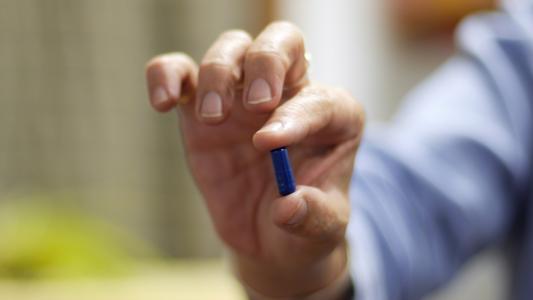Here at the Dope Science Drug Guide, you’ve already received the rundown on most of the usual suspects moving from Drug World into Real Science — marijuana, psilocybin, LSD, ketamine, and MDMA (plus ibogaine).
Are you ready for something (literally) wild?
How about toad venom?
Yes, hallucinogenic hoppers are indeed a real thing, and the compound produced in Sonoran desert toad venom — 5-MeO-DMT — is starting to attract scientific research into its therapeutic potential. While it’s early days for toad venom vetting, what’s out there is fairly promising.
Let’s jump to it! It’s time for another Dope Science Drug Guide.
What’s This Toad Venom Drug Now?
First off, let’s get one thing crystal clear: 5-MeO-DMT is not the same thing as vanilla DMT.
“Completely different substances,” says Rafael Lancelotta, a therapist at Innate Path (a clinic, training, and research organization for psychedelic therapy) and founding board member of Source Research Foundation.
This train wreck of punctuation and capitalization stands for 5-Methoxy-N,N-dimethyltryptamine. It’s found naturally in numerous places, but most famously in Sonoran desert toad venom.
Sonoran desert toads are chunky little beasts, among the largest toads in North America, at upwards of half a foot in length. They’re built like a tumbled Graveler, with a greenish-grey topside, bone-colored bellies, and smooth complexions (for a toad), as well as prominent glands on their head and hind legs.
It is from these glands that the toad venom is extracted, dried, and vaporized.
Why Do People Get High on This Stuff?
Psychedelic toad venom (reportedly) produces mystical experiences on par with psilocybin, but for a much shorter duration — on average for 20-minutes. It does not produce the same kind of visual trips that mushrooms or DMT do.
“People really commonly reported a feeling of experiencing their own death,” says Lacelotta, who was an author on a study that took a survey-based approach to studying 5-MeO-DMT.
Most users vaporize the drug, Lancelotta says, but the survey found some insufflation (snorting) and intramuscular (injection) administration, too. Like other psychedelics, it does not seem to lend itself to chronic abuse. (The appeal of psychedelic toad venom is, evidently, not a daily habit.)
Unlike some other natural psychedelic substances, the discovery of 5-MeO-DMT in toad venom is relatively recent, and does not trace back to Indigenous religious or ceremonial practices.
What’s the New Medical Research?
There is a mounting body of evidence for psychedelics as powerful therapeutic tools — especially psilocybin, MDMA, and ketamine.
While 5-MeO-DMT has yet to be used in a clinical setting with human subjects (although there has been one naturalistic study) work has been done in mice and organoids, and it stands to reason that its trip capabilities, on par with mushrooms, make it a viable candidate as well.
Researchers at Johns Hopkins have reported links between 5-MeO-DMT use in a ceremonial setting and self-reported improvements in depression and anxiety. Of the 362 adult subjects, 80% reported mental health improvements after use; as with psilocybin therapy, the benefits jogged with the intensity of the trip.
(It’s worth considering, however, that people who actively seek out psychedelic toad venom may be different from the rest of us — YMMV.)
Perhaps the single most exciting aspect of 5-MeO-DMT is its “celerity”: the speed with which the trip begins and ends may make it a desirable therapeutic tool.
“Research has shown that psychedelics given alongside psychotherapy help people with depression and anxiety,” Hopkins’ researcher Alan K. Davis said in the study’s press release. “However, psychedelic sessions usually require 7-8 hours per session because psychedelics typically have a long duration of action.”
That long trip is on top of the therapy sessions that are supposed to help you prepare for, and then integrate, what you’ve experienced — researchers believe these sessions are crucial to the beneficial effects. It all adds up to a ton of time most people don’t have and expensive hours of supervision — and which insurance companies may be loath to pay for.
Much shorter trips could equal less expense and the ability to take 5-MeO-DMT on the equivalent of, say, a lunch break; people usually report they snap back to normal once the effect wears off.
“That is, for me, one of the dreams with this, is potentially that it may solve a lot of problems with accessibility,” Lancelotta says.
The Promise and the Pitfalls
Like THC and so many other potential therapeutic drugs, the big caveat here is research: we need a lot more of it.
There’s also environmental concerns for the Sonoran desert toad, who, despite being a boss insofar as amphibians go — apparently eating whatever can fit in its mouth, including spiders, insects, lizards, other amphibians, and even freaking mice — could find its population suffering in the face of habitation loss and potential toad venom poaching.
5-MeO-DMT, however, is synthesizable, so it’s possible we could spare the toad and use the venom.






